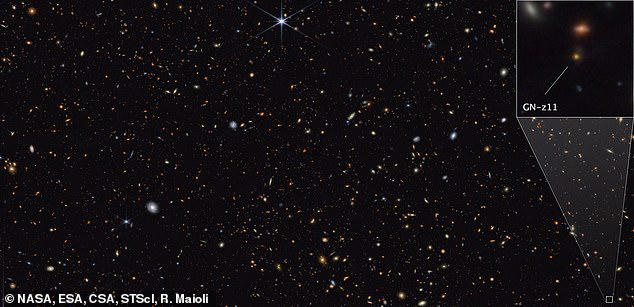Primordial Black Holes Evidence might finally be within reach as new research suggests hollow planetoids and microscopic tunnels in ancient rocks could reveal their existence. Discover how scientists are rethinking the search for these cosmic mysteries.

Primordial Black Holes Evidence: A New Search Begins
For decades, scientists have been searching for Primordial Black Holes Evidence to explain dark matter and the early universe’s chaotic conditions. While black holes formed from collapsing stars are well-known, primordial black holes (PBHs) are theorized to have formed shortly after the Big Bang. These small black holes could be hiding among us, and a new study suggests innovative ways to detect their presence.
Researchers from the University at Buffalo believe that PBHs may have left behind physical marks in space and on Earth. Their study proposes looking for hollow planetoids and microscopic tunnels as potential signs of PBHs. This approach could provide the Primordial Black Holes Evidence that scientists have been seeking for decades.
What Are Primordial Black Holes?
Before diving into how to find them, it’s essential to understand what PBHs are. Unlike black holes that form when massive stars die, PBHs are thought to have formed from density fluctuations in the early universe. These tiny black holes could exist in large numbers and might even be the mysterious dark matter that makes up 85% of the universe’s mass.
However, no one has directly observed a PBH. Traditional methods have failed to find Primordial Black Holes Evidence, which is why scientists are now exploring new strategies.
Primordial Black Holes Evidence in Hollow Planetoids
One of the new ideas involves looking for hollow planetoids in space. According to the study, a PBH could become trapped inside a rocky object like an asteroid, moon, or small planet. Over time, it could consume the object’s dense liquid core, leaving behind a hollow shell.
The research team calculated that this hollow shell could only remain stable if the object is no larger than one-tenth the size of Earth. Anything bigger would collapse due to its own gravity. Detecting such hollow bodies could provide strong Primordial Black Holes Evidence.
Astronomers could spot these hollow objects by measuring their mass and comparing it to their size. If an object appears too light for how big it is, that could signal that it’s hollow and possibly the result of a PBH’s activity.
Microscopic Tunnels: Tiny Clues of PBHs on Earth
Another promising method to find Primordial Black Holes Evidence involves searching for microscopic tunnels in ancient materials on Earth. A PBH passing through a solid object like rock, metal, or glass could leave behind a perfectly straight tunnel just 0.1 microns wide.
Although the chances of witnessing a PBH pass through a material today are very low, there’s a better chance of finding these tunnels in objects that are millions or even billions of years old. These ancient materials could have “recorded” a PBH’s passage long ago.
Old rocks, centuries-old buildings, and large slabs of industrial metal could all be examined for these tiny tunnels. Even though the probability of finding Primordial Black Holes Evidence this way is small, the cost of searching is very low, making it a worthwhile effort.
Are Primordial Black Holes Dangerous?
A common question arises: what happens if a PBH passes through Earth—or even a human body? According to the researchers, there’s no need to worry. Human tissue is soft and flexible, so a PBH would likely pass through without causing harm.
The study explains that PBHs move at incredibly high speeds, meaning they don’t release much energy when colliding with objects. The researchers compare it to shooting a bullet through a window—it might just leave a hole rather than shattering the glass. This is why Primordial Black Holes Evidence in the form of tunnels could exist in solid materials, but not necessarily cause visible damage to people or large structures.
Everyday Objects as Primordial Black Hole Detectors
One of the most exciting aspects of this study is the idea that everyday objects could act as detectors. Materials like ancient rocks, old metal beams, or even centuries-old monuments could contain Primordial Black Holes Evidence in the form of microscopic tunnels.
Rather than building expensive detectors, scientists could examine objects that have existed for thousands or even millions of years. These items could hold clues left behind by PBHs that passed through them long ago.
The Importance of New Theoretical Ideas
Finding Primordial Black Holes Evidence isn’t just about discovering exotic cosmic objects. It’s also a crucial step in solving one of physics’ biggest mysteries—dark matter. Despite years of research, scientists still don’t know what dark matter is made of, and PBHs remain a leading candidate.
Professor Dejan Stojkovic, a co-author of the study, emphasizes that new theoretical ideas are needed. Quantum mechanics and general relativity were revolutionary over a century ago, but since then, no new frameworks have successfully unified our understanding of the universe.
Stojkovic believes that finding Primordial Black Holes Evidence could push physics into a new era. He suggests that rather than extending current models, scientists may need to rethink the very foundations of physics to solve these enduring cosmic mysteries.
A Low-Cost, High-Reward Scientific Quest
Although the probability of success is low, the researchers argue that searching for Primordial Black Holes Evidence is a high-reward endeavor. The resources needed for these searches are minimal compared to the potential scientific payoff. Finding direct evidence of PBHs would not only confirm their existence but also shed light on the nature of dark matter and the conditions of the early universe.
In conclusion, while the odds are long, the new approach to detecting Primordial Black Holes Evidence is simple, cost-effective, and could unlock some of the biggest secrets of the cosmos.
Related:
Black Hole to White Hole Transition: 5 Stunning Breakthroughs